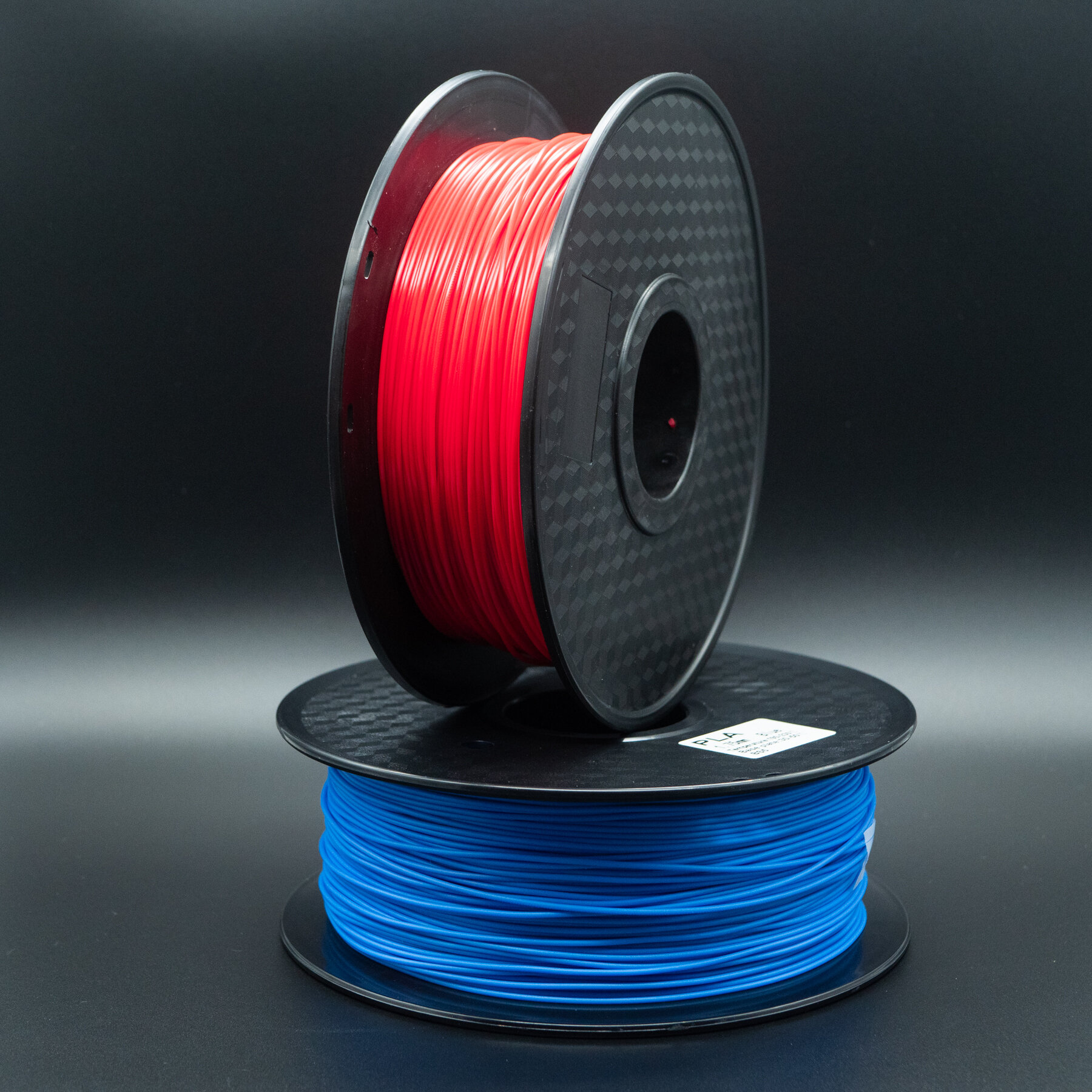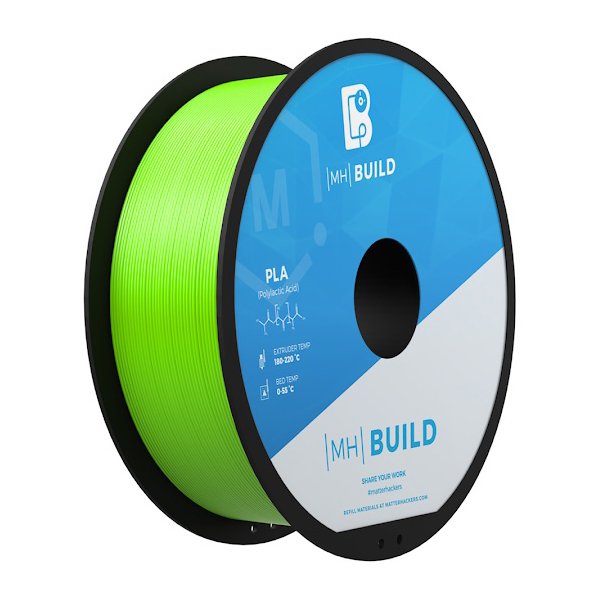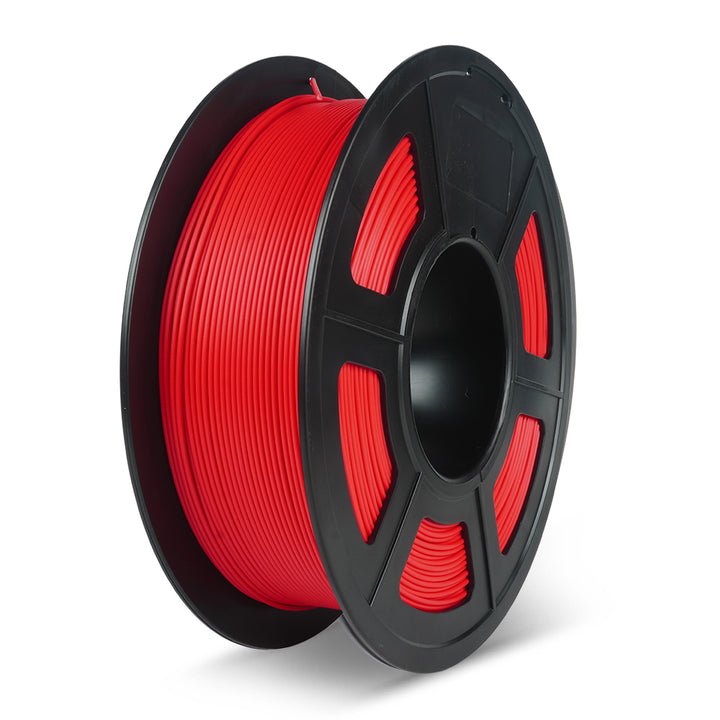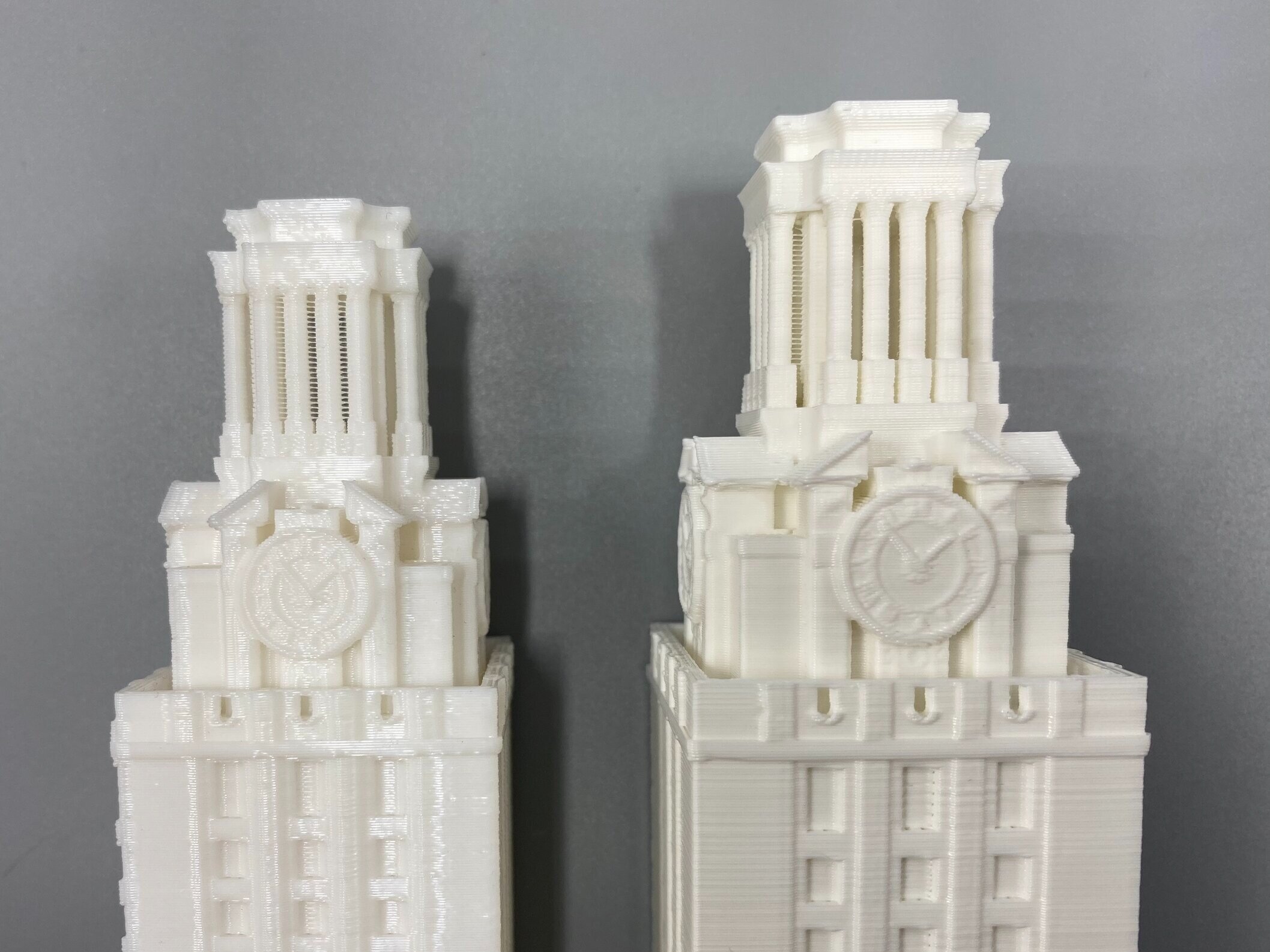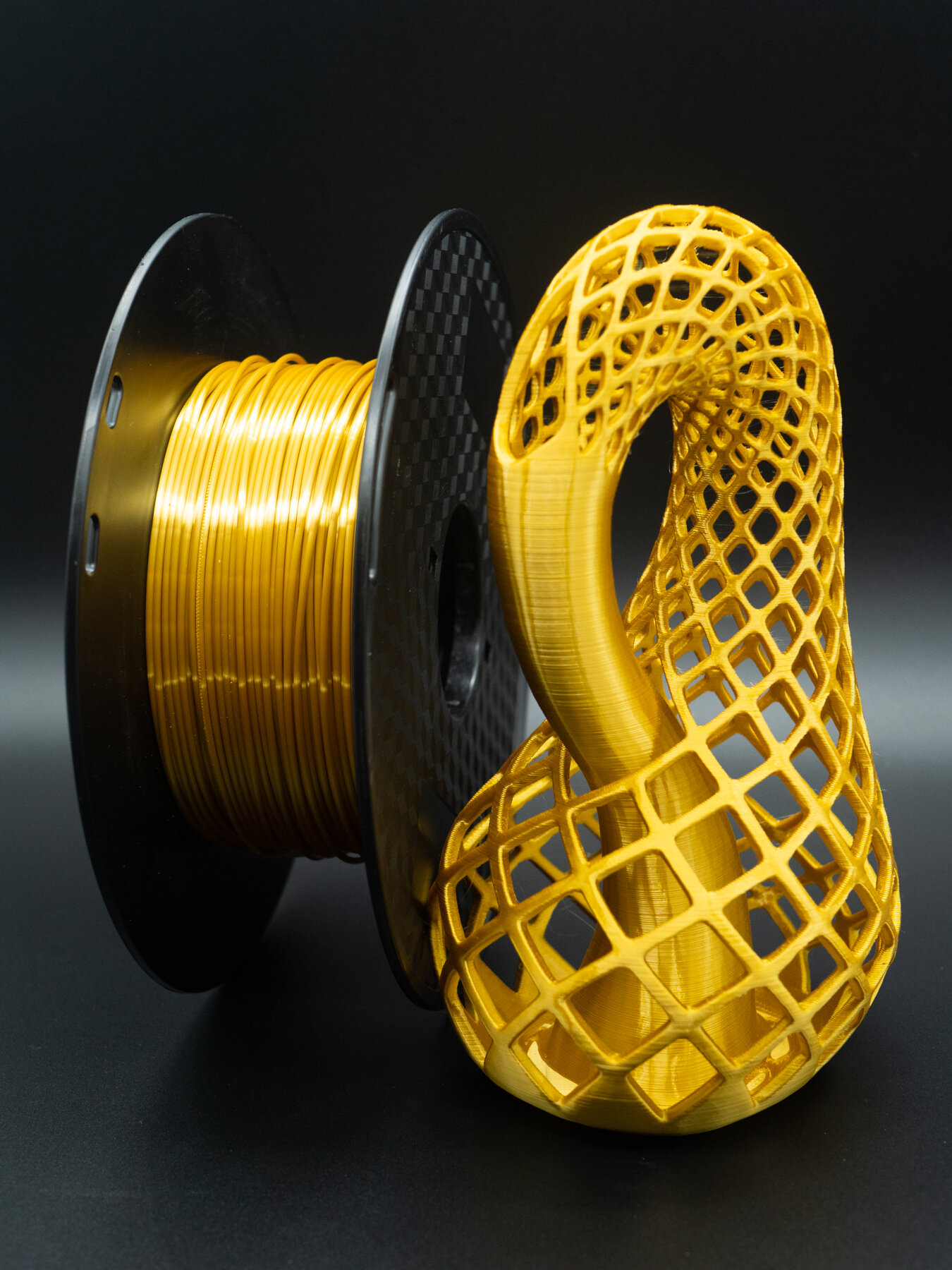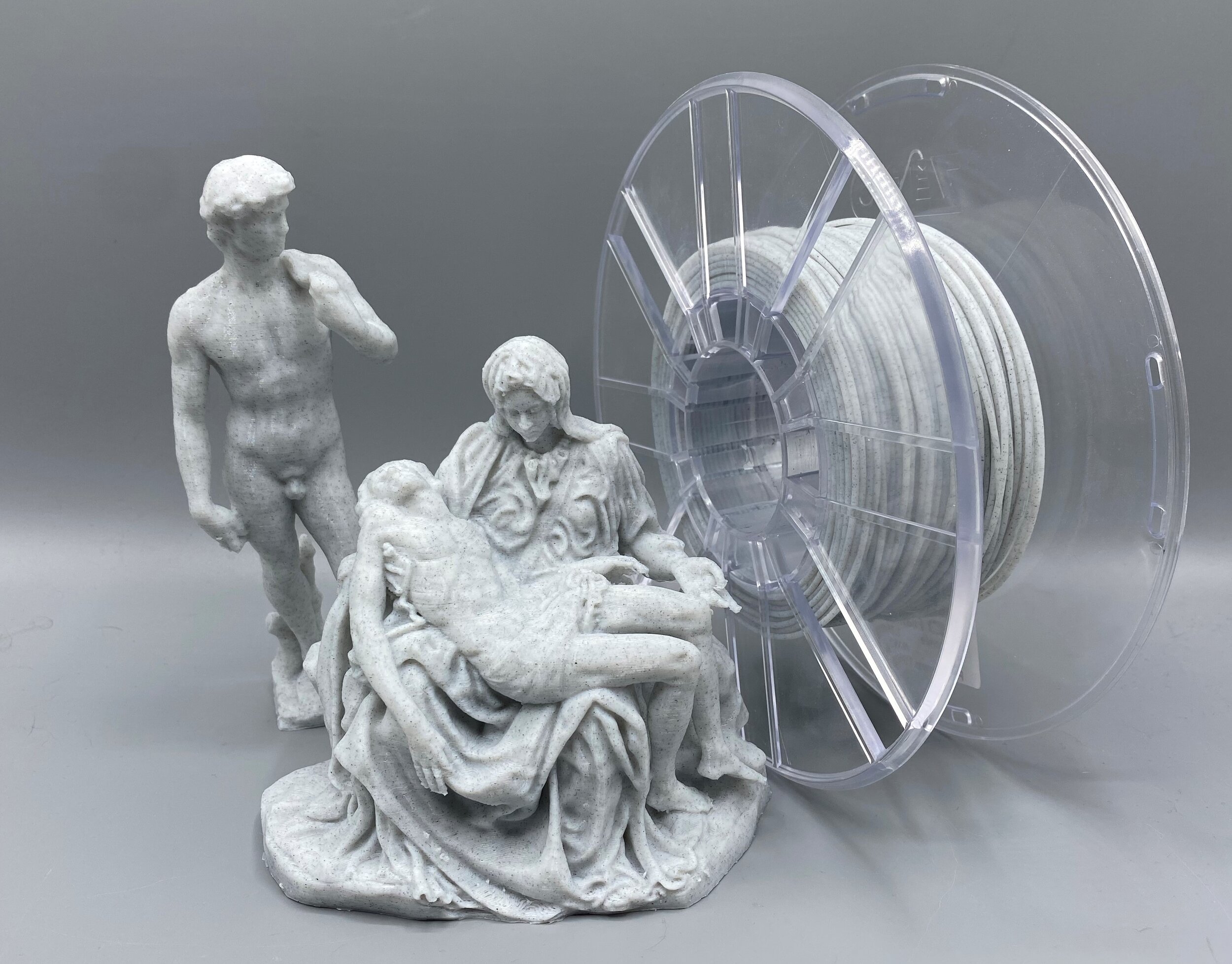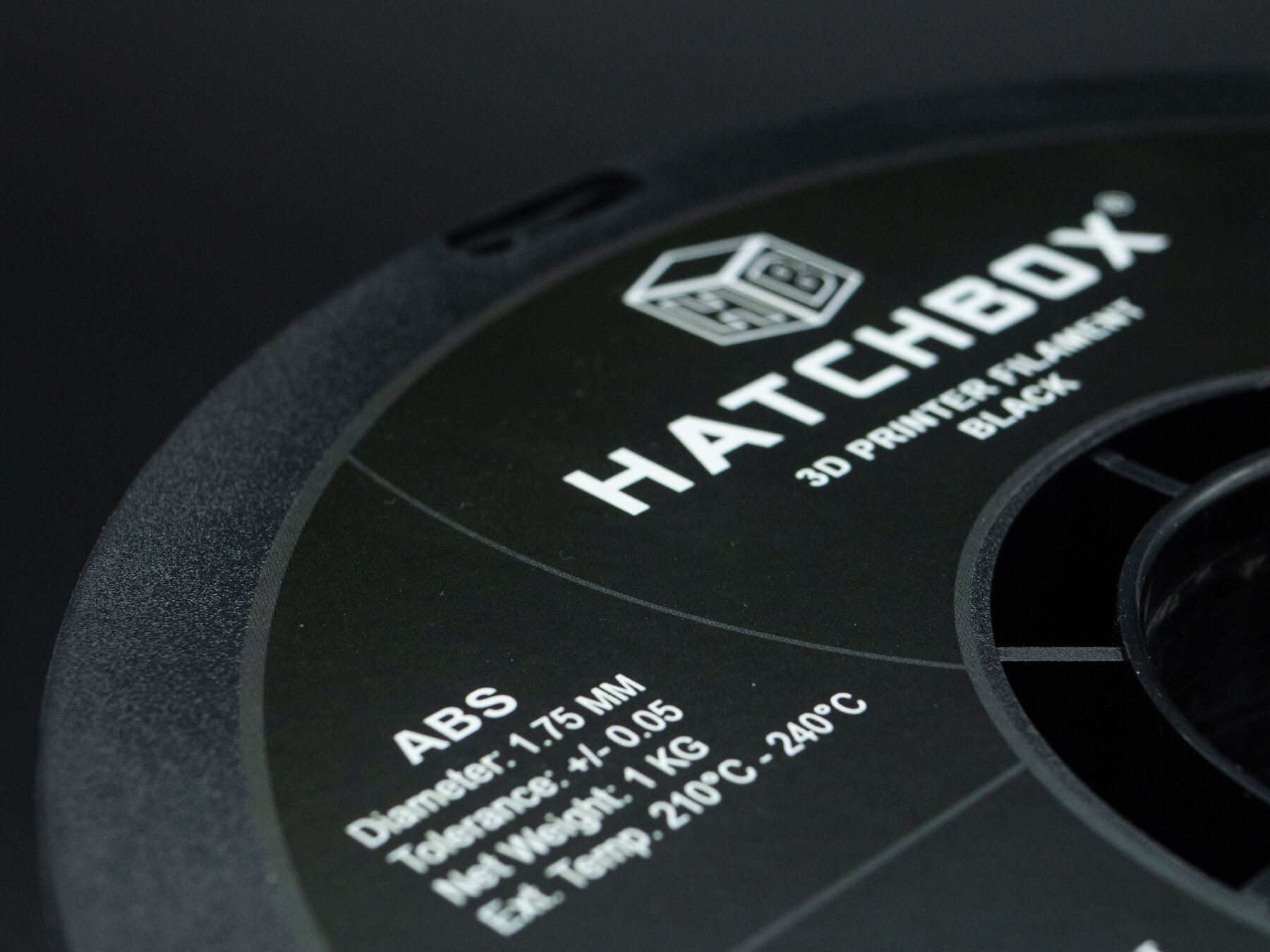The Best Filament for Creality 3D Printers
Last updated: January 21, 2024
Looking for the best filament for your Creality Ender 3 series or similar 3D printer, but not sure what kind of filament you should be using, or which brands are best? This guide will help you pick out the right filament from the wide range of available brands and materials. Also, if you are looking to save money by buying filament in bulk, we have a few recommendations for you as well.
Besides the 3D printer itself, the plastic filament you use is one of the biggest factors in determining how successful your prints will be. The best filament will print reliably and provide a smooth, consistent finish. On the other hand, lower quality filament is more likely to jam while printing and will often cause excessive stringing, which lengthens the cleanup process after the print. Choosing the best 3D printer filament for your machine is a critical part of the printing process.
Fortunately, filament has come down in price significantly in the last few years, and you can get high quality filament for a reasonable price. We’ve used many of the available options and we can confidently recommend the best filament for your Ender 3, Ender 5, or other Creality 3D printer.
We’ve used a lot of filament, and have found which brands you can trust to deliver consistent quality.
There are several filament materials that you might be interested in for different purposes. We’ll cover the major types in this article. You may occasionally come across different diameters of filament, such as 1.75mm and 2.85mm. All current Creality 3D printers use 1.75mm filament, so that’s the only type we will be discussing here. Be sure that you check that any filament you buy is the correct diameter; otherwise it will not be usable on your machine. Fortunately, most filament on the market today is 1.75mm.
Note: Creality Experts receives a commission for items you purchase from this page, at no additional cost to you. For more information, please see our affiliate link policy.
We’ll be looking at the following materials in this article:
We’ll also share a few ways you can save by buying filament in bulk without sacrificing quality, like we do for our 3D printing business 3DPros.
PLA is the best filament choice for general use. It’s easier to print and less prone to failure than more exotic filament choices. PLA is available in a wider range of colors than most other filament types, and is generally the cheapest type of filament. If you don’t have any special requirements for your 3D printing—such as high temperature resistance or watertight capability—you should probably use PLA.
The Best PLA Filament Brands
With lower quality filaments, you are more likely to see inconsistent thicknesses and tangles, which will cause frustrating issues that can lead to print failures or poor quality prints. We’re confident in these brands since we’ve printed many rolls of each and have been very pleased with their performance and consistency—we think these recommendations are some of the best PLA filament brands you can get. You can click any of the following links to view these filament brands on Amazon and choose from the available colors.
Overture PLA - good color selection, convenient indicator showing how much filament is left. One of our most trusted brands for PLA.
MatterHackers MH PLA - High quality filament and very affordable when ordering multiple rolls. You’ll need to order 2 or more rolls to get free shipping, however they offer very good bulk pricing the more rolls you order. Note: Be sure to select 1.75 mm diameter filament for Creality printers.
SUNLU PLA - Reliable and affordable filament available in a wider range of colors. SUNLU’s filament has been consistent in our experience, and is a solid choice.
Overture PLA is available in many colors, and has a convenient indicator showing how much filament is left on the roll.
Matterhackers MH Build Series PLA is high-quality, making it a great choice for consistency and strength. You can get free shipping from Matterhackers if you order 2 or more rolls.
SUNLU PLA is one of the most affordable filament options, while being reliable and consistent. It’s available in a wide range of colors.
Specialty PLA Brands
These PLA brands have special qualities that make them better suited for certain applications. The links below will take you to the Amazon page for each filament brand.
Hatchbox PLA: We’re particularly impressed with the surface finish of Hatchbox PLA. In particular, the white color is ideal for architectural models or other high-detail designs. It provides more contrast on detailed features than other white PLA we’ve used. For high-detail display models, we always use Hatchbox PLA.
Silk PLA: This “silk PLA” is available in a many colors such as silver, and gold, and black. It provides a unique shiny finish that looks metallic without all of the printing headaches of actual metal-infused filament. It’s sold by CC3D and TTY3D, is easy to print with, and yields a fantastic result.
Marble PLA: This material is infused with small dark colored specs which give it the appearance of marble stone. This filament looks great for printing models like statues or buildings, and provides a great surface finish with almost hidden layer lines
Hatchbox PLA (right) provides superior contrast on small details, like this clock face
This Silk Gold PLA from Sunlu has a striking metallic appearance that is very shiny and looks metallic. It’s an excellent choice for decorative prints. Check it out on Amazon here.
Marble PLA is infused with small dark specs that give it a smooth, stonelike appearance
ABS Filament
ABS is another common filament choice, especially for parts that will be exposed to high temperatures or outdoor use. It can also be sanded much more easily than other materials and smoothed using Acetone, making it a great material if you are looking to smooth and paint your prints. It’s well known as a plastic for injection molding, and many consumer parts are made of ABS plastic. However, ABS is more difficult to print than PLA, largely because the parts will have a tendency to curl upward off of the print bed and permanently warp.
To prevent this, it’s necessary to print ABS with the heat bed at a much hotter 100°C. All of Creality’s current 3D printers can handle this temperature, but you may notice that it takes longer for the printer to heat up before you begin printing.
ABS prints also come out much better if the 3D printer is enclosed, especially for larger parts —this prevents air drafts from cooling different parts of the print at different rates. You can build a budget enclosure yourself using cardboard or foam insulation board, or purchase one (such as this Ender 3 Enclosure from Amazon). Some printers, such as the Creality K1, have an enclosure as part of their design and are better suited for printing ABS with no additional upgrades.
Since ABS is more difficult to print, we use it only when the specific application requires it. However, if you do need to use ABS filament for your application, we have one strong brand recommendation:
The Best ABS Filament Brand: Hatchbox
There is one brand of ABS filament that we recommend above all of the rest, and it is Hatchbox. Although all ABS is at risk of warping, our experience has shown that Hatchbox ABS warps substantially less than other brands, making it a more reliable choice for printing. You can find Hatchbox ABS on Amazon and we use it exclusively for ABS printing.
For ABS, we recommend Hatchbox filament above all other choices. It’s less prone to warping than other filaments we have tried. Check it out on Amazon here.
PETG Filament
A third common filament type used in 3D printing is PETG. In comparison to PLA, PETG has improved high temperature resistance, strength with some flexibility, and a glossy appearance. It can also be printed in a way that makes it watertight. PETG is one of our favorite filament types to use for printing strong parts, and is great for functional items. It’s also often found in transparent or translucent color options, and does very well with thin walls.
It does need to be printed with the heat bed at 75°C, but all of the Creality printers are capable of reaching this temperature. In comparison to ABS, PETG is much easier to print—the only concession that you have to make is to print it more slowly than PLA. It has relatively few issues with print warping, and the only issue you may encounter is that prints can sometimes come out stringy, requiring a bit of cleanup after printing.
The Best PETG Filament Brands
Each of these options is available in a variety of colors, which you can choose on the Amazon product pages linked here. We have used all of these with great results. Overture is our go-to brand, but we have used a few others with good results as well:
TPU is the most common flexible 3D printing material. It has a rubbery consistency, and unlike the other filament types, it can bend and flex with ease. These properties make TPU an ideal choice for parts that need to withstand impact forces, such as FPV drone parts or smartphone cases.
TPU can be printed at 210-220°C, which is a reasonable temperature that all Creality 3D printers can handle. However, because it is a flexible filament, TPU greatly benefits from a direct-drive extruder, such as the Sprite Pro found on the Ender 3 S1 [Amazon]. If you’re printing TPU on an Ender 3 V2 or similar 3D printer with a Bowden extruder, you will need to disable retraction and print very slowly—potentially as low as 10 mm/s.
The Best TPU Filament Brands
We have typically had good success printing TPU with the following brands, and each is available in a wide range of colors. The following links will take you to the Amazon or Matterhackers product page for each brand.
Buying Filament in Bulk
If you are looking to 3D print a lot or are thinking of starting a 3D printing business, a great way to save money is to buy 3D printing filament in bulk. When we say bulk, anything more than 5 rolls is enough to start seeing savings - you don’t need to be ordering industrial quantities. In our experience, we have found a couple good options:
Matterhackers - most filaments sold here have a progressive bulk discount that increases as you buy more filament, up to 12 rolls. We often order their MatterHackers MH PLA for our 3D Printing business and have had great results.
Alibaba - if you are ordering in the 50+ rolls range, you can save a lot by ordering directly from the manufacturer. We have ordered filament from KCamel through Alibaba to get very low prices, but it typically takes a month or more for shipping. The filament quality has been good in our experience, but the ordering process is more challenging than Amazon or MatterHackers.
Other Filament Types
There are a number of more specialized filament types, such as nylon, PVA, and ASA. It’s also possible to buy filament infused with particles or threads of other material, such as metalfill, woodfill, or carbon fiber filament. We haven’t tested these options well enough to provide a recommendation, and we would recommend that most users stick with the more common options above for standard 3D printing.
That said, if you’re curious about one of these specialized filament types and would like to see us test them more thoroughly, send us an email and let us know what you’re looking for. If there is interest in this type of testing, we’d be happy to do it!
